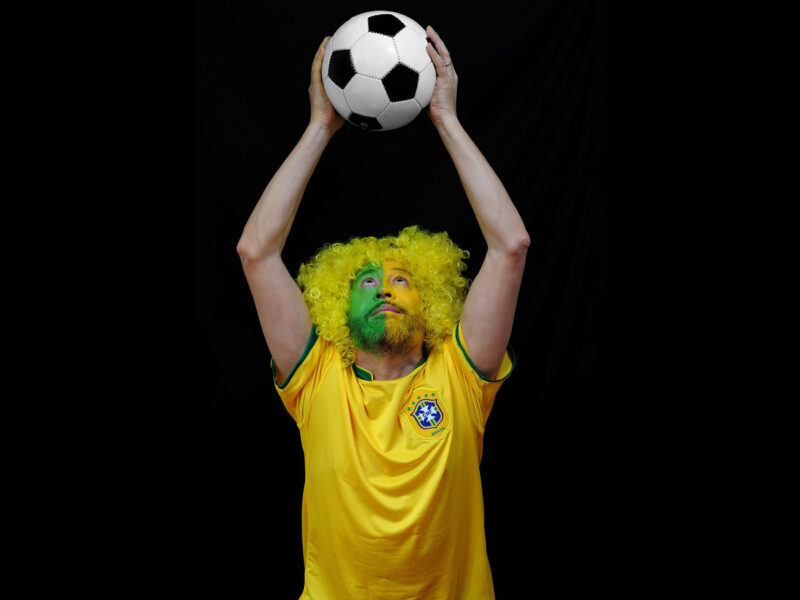Nearly nine out of ten Americans say that they enjoy sports at least a little, but heterosexual men commonly identify as avid sports fans, a new analysis indicates.
A poll of almost 4,000 American adults found that only 11% said they didn’t identify as sports fans in any respect. More than 40% were passionate fans, identifying themselves as being “quite a bit” or “very much so” sports fans.
Approximately 60 percent of heterosexual men in the survey identified as passionate sports fans, compared to about 40 percent of the heterosexual women and lesbians. About 30% of gay men reported being enthusiastic sports fans.
“We found that U.S. adults respond overwhelmingly that they are sports fans,” said Chris Knoester, co-author of the study and associate professor of sociology at The Ohio State University.
“Sports fandom is an ingrained part of our culture and central in the lives of many people.”
The study, published at the Sociology of Sport Journal, was led by Rachel Allison, associate professor of sociology at Mississippi State University.
“One of the advantages of the survey data in this study is that it has a relatively large sample of individuals who identify as a sexual minority or as nonbinary in terms of their gender identity, which has not been the case in most previous studies,” Allison said.
“It allowed us to show that while heterosexual men are particularly likely to identify as strong sports fans, there are substantial numbers of people across gender and sexual identities who are also passionate fans.”
Research data came from the National Sports and Society Research (NSASS), sponsored by Ohio State’s Sports and Society Initiative.
The survey was performed by 3,993 adults that volunteered to participate through the American Population Panel, run by Ohio State’s Center for Human Resource Research. Participants, who came from all 50 states, responded the survey online between the autumn of 2018 and spring of 2019.
Since NSASS participants were disproportionately female, white and Midwestern, the investigators weighted the survey results to reflect that the U.S. population more accurately. This resulted in modest increases of about 5 percent in the population estimates of the amount of enthusiastic sports fans.
While there was growing attention in the United States to Women’s sports, as well as gay and lesbian participation in sports, there has not been great data on the way the variety of sex and sexual identities are reflected in the bigger sports enthusiast community, Knoester said.
This analysis provides a preliminary look. About 27% of those surveyed identified as lesbian, gay, bisexual or a sexual individuality other than heterosexual. Approximately 3% of respondents identified as nonbinary.
Overall, heterosexual men tended to identify as big sports fans. By comparison, heterosexual women, lesbians and gay men were more likely to say they were “somewhat” of a sports fan on average.
But while heterosexual men are definitely more likely to be big sports fans than gay men, lesbians and heterosexual women have comparable interest in athletics, according to the results.
“Identifying as lesbian does not seem to discourage sports fandom like identifying as gay does for men,” Allison said.
The investigators explored whether early childhood experiences shaped sports fandom in adults. As expected, individuals who said they thought of themselves as athletes throughout childhood and that often thought about sports were far more likely to be more likely to be sports fans as adults.
Individuals who stated they were abused in sports-related interactions during their life – like being called names or being bullied – are far less likely to be sports fans as adults.
However, the researchers didn’t find that childhood sports encounters or mistreatment accounted for sex and sexual identity differences how much adults identified as sports fans.
Allison said it’s apparent that the historical masculine, heterosexual culture of sports is changing. She documented a few of those modifications in her book Kicking Center: Gender and the Selling of Women’s Professional Soccer.
But she explained the results of the new study suggest it may not have changed enough to create some girls and sexual minorities comfortable to recognize as sports fans.
“We’ve clearly moved beyond the era of open hostility to women, lesbians and gay men in sports,” Allison said.
“But the extent to which we’ve moved from tolerant to fully inclusive cultures isn’t necessarily clear. We may be in this period of transition.”
Knoester and Allison stated sports organizations on all levels, from professional to youth, still need to do more to be inclusive to individuals with distinct gender and sexual identities.
“You aren’t born being a sports fan. The differences in fandom we found here in this study are socially and culturally produced to a great extent, and they can be changed,” Knoester said.
Related Journal Article: https://journals.humankinetics.com/view/journals/ssj/aop/article-10.1123-ssj.2020-0036/article-10.1123-ssj.2020-0036.xml

